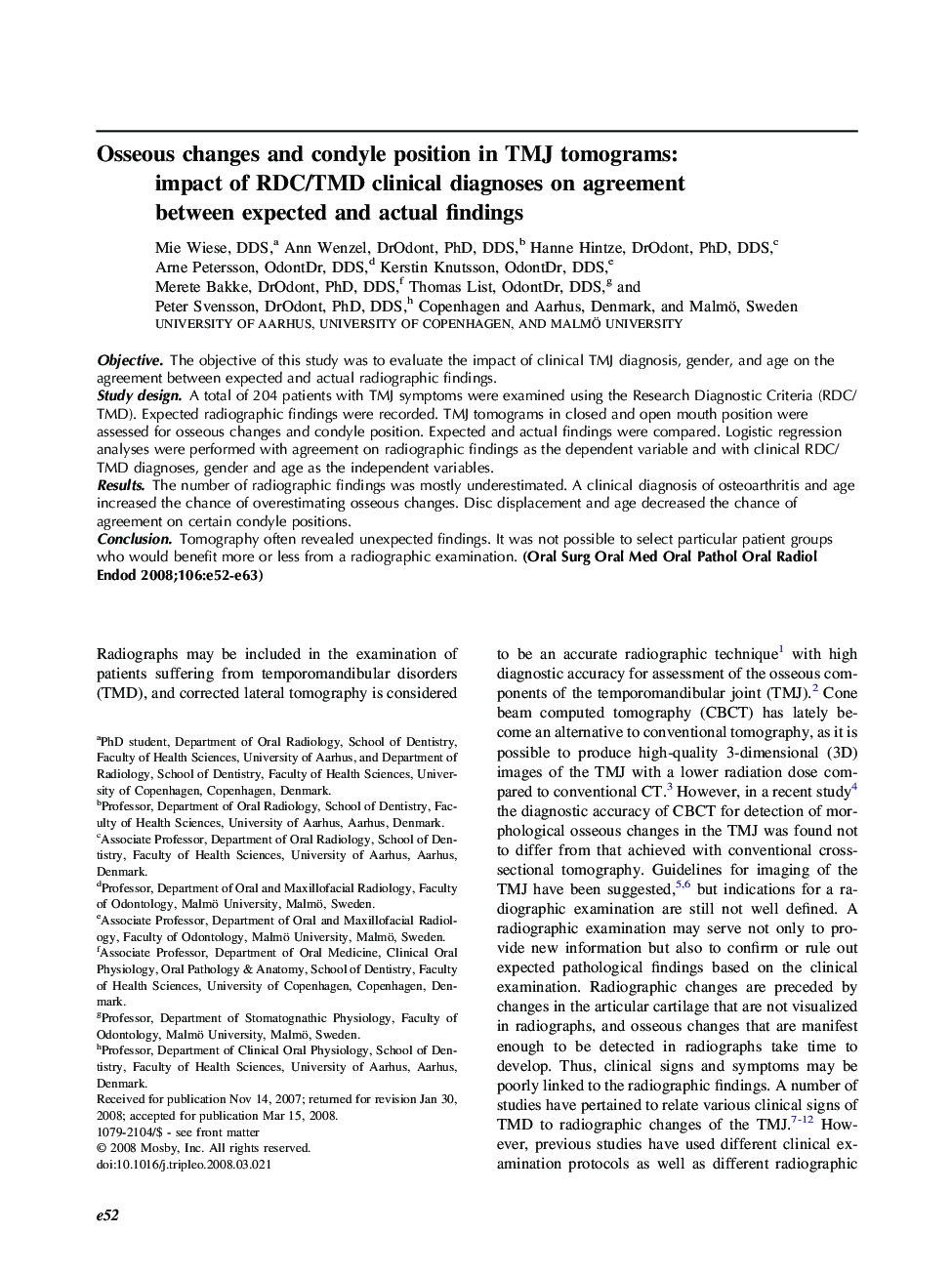| Article ID | Journal | Published Year | Pages | File Type |
|---|---|---|---|---|
| 3168586 | Oral Surgery, Oral Medicine, Oral Pathology, Oral Radiology, and Endodontology | 2008 | 12 Pages |
ObjectiveThe objective of this study was to evaluate the impact of clinical TMJ diagnosis, gender, and age on the agreement between expected and actual radiographic findings.Study designA total of 204 patients with TMJ symptoms were examined using the Research Diagnostic Criteria (RDC/TMD). Expected radiographic findings were recorded. TMJ tomograms in closed and open mouth position were assessed for osseous changes and condyle position. Expected and actual findings were compared. Logistic regression analyses were performed with agreement on radiographic findings as the dependent variable and with clinical RDC/TMD diagnoses, gender and age as the independent variables.ResultsThe number of radiographic findings was mostly underestimated. A clinical diagnosis of osteoarthritis and age increased the chance of overestimating osseous changes. Disc displacement and age decreased the chance of agreement on certain condyle positions.ConclusionTomography often revealed unexpected findings. It was not possible to select particular patient groups who would benefit more or less from a radiographic examination.
